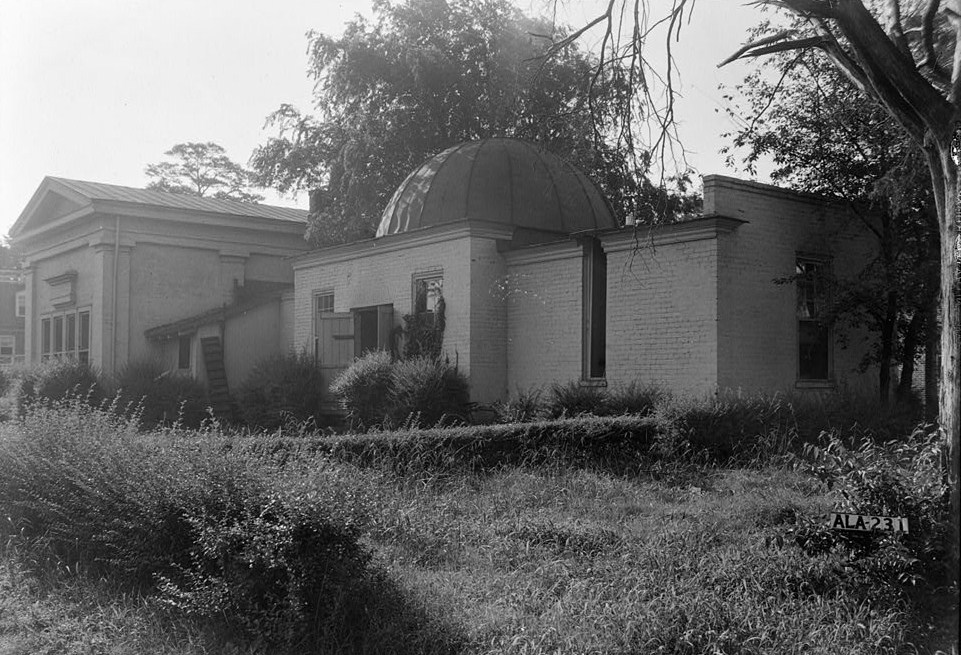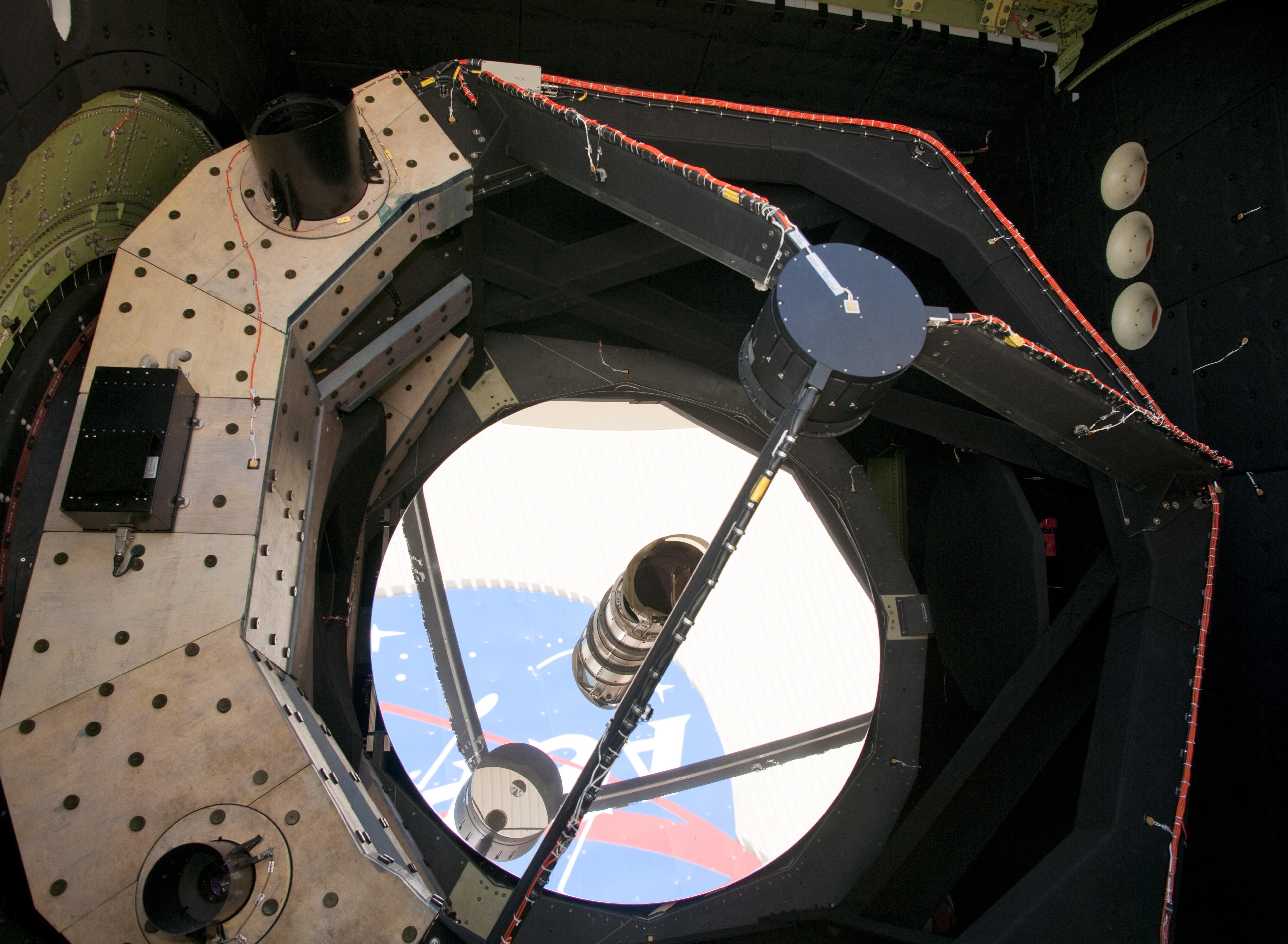|
University Of Alabama Observatory
The University of Alabama Observatory is an astronomical observatory owned and operated by the University of Alabama in Tuscaloosa, Alabama. The new domed observatory was built atop Gallalee Hall, completed in 1949. It replaced the Old Observatory, which had been in use from 1849 until the 1890s. Initially equipped with a refracting telescope, this was the university's primary telescope from 1950 until 2004. The old telescope was removed and then sold to an antique telescope collector to make way for the new instrument. A new Ritchey-Chrétien reflector, manufactured by DFM Engineering, was installed in 2005. The observatory and its instruments are made available for free public viewing one night per month, weather permitting. The schedule for public viewing is available on the observatory's official website and is updated on a semesterly basis. See also *Old University of Alabama Observatory *List of observatories This is a list of astronomical observatories ordered ... [...More Info...] [...Related Items...] OR: [Wikipedia] [Google] [Baidu] |
University Of Alabama
The University of Alabama (informally known as Alabama, UA, or Bama) is a Public university, public research university in Tuscaloosa, Alabama. Established in 1820 and opened to students in 1831, the University of Alabama is the oldest and largest of the public List of colleges and universities in Alabama, universities in Alabama as well as the University of Alabama System. It is Carnegie Classification of Institutions of Higher Education, classified among "R1: Doctoral Universities – Very high research activity". The university offers programs of study in 13 academic divisions leading to bachelor's, master's, Ed.S., education specialist, and doctorate, doctoral degrees. The only publicly supported University of Alabama School of Law, law school in the state is at UA. Other academic programs unavailable elsewhere in Alabama include doctoral programs in anthropology, communication and information sciences, metallurgical engineering, music, Romance languages, and social work. ... [...More Info...] [...Related Items...] OR: [Wikipedia] [Google] [Baidu] |
Tuscaloosa, Alabama
Tuscaloosa ( ) is a city in and the seat of Tuscaloosa County in west-central Alabama, United States, on the Black Warrior River where the Gulf Coastal and Piedmont plains meet. Alabama's fifth-largest city, it had an estimated population of 101,129 in 2019. It was known as Tuskaloosa until the early 20th century. It is also known as ''"the Druid City"'' because of the numerous water oaks planted in its downtown streets since the 1840s. Incorporated on December 13, 1819, it was named after Tuskaloosa, the chief of a band of Muskogean-speaking people defeated by the forces of Spanish explorer Hernando de Soto in 1540 in the Battle of Mabila, in what is now central Alabama. It served as Alabama's capital city from 1826 to 1846. Tuscaloosa is the regional center of industry, commerce, healthcare and education for the area of west-central Alabama known as ''West Alabama;'' and the principal city of the Tuscaloosa Metropolitan Statistical Area, which includes Tuscaloosa, Hale and ... [...More Info...] [...Related Items...] OR: [Wikipedia] [Google] [Baidu] |
Alabama
(We dare defend our rights) , anthem = "Alabama (state song), Alabama" , image_map = Alabama in United States.svg , seat = Montgomery, Alabama, Montgomery , LargestCity = Huntsville, Alabama, Huntsville , LargestCounty = Baldwin County, Alabama, Baldwin County , LargestMetro = Birmingham metropolitan area, Alabama, Greater Birmingham , area_total_km2 = 135,765 , area_total_sq_mi = 52,419 , area_land_km2 = 131,426 , area_land_sq_mi = 50,744 , area_water_km2 = 4,338 , area_water_sq_mi = 1,675 , area_water_percent = 3.2 , area_rank = 30th , length_km = 531 , length_mi = 330 , width_km = 305 , width_mi = 190 , Latitude = 30°11' N to 35° N , Longitude = 84°53' W to 88°28' W , elevation_m = 150 , elevation_ft = 500 , elevation_max_m = 735.5 , elevation_max_ft = 2,413 , elevation_max_point = Mount Cheaha , elevation_min_m = 0 , elevation_min_ft = 0 , elevation_min_point = Gulf of Mexico , OfficialLang = English language, English , Languages = * English ... [...More Info...] [...Related Items...] OR: [Wikipedia] [Google] [Baidu] |
United States
The United States of America (U.S.A. or USA), commonly known as the United States (U.S. or US) or America, is a country primarily located in North America. It consists of 50 states, a federal district, five major unincorporated territories, nine Minor Outlying Islands, and 326 Indian reservations. The United States is also in free association with three Pacific Island sovereign states: the Federated States of Micronesia, the Marshall Islands, and the Republic of Palau. It is the world's third-largest country by both land and total area. It shares land borders with Canada to its north and with Mexico to its south and has maritime borders with the Bahamas, Cuba, Russia, and other nations. With a population of over 333 million, it is the most populous country in the Americas and the third most populous in the world. The national capital of the United States is Washington, D.C. and its most populous city and principal financial center is New York City. Paleo-Americ ... [...More Info...] [...Related Items...] OR: [Wikipedia] [Google] [Baidu] |
DFM Engineering
DFM Engineering is an American telescope and optics manufacturer founded in 1979 by Frank Melsheimer in Longmont, Colorado. DFM makes medium size Cassegrain telescopes and their associated systems including telescope optics, control systems, and mounts. A range of pre-designed telescopes are made, as are various custom installations. DFM produces its classical Cassegrain design in various apertures from 16 inches (0.4 m) to 50 inches (1.3 m) and larger. The base DFM 16-inch (40 cm) telescope system cost roughly 94 thousand USD in 2005. DFM produced a 1.6 m solar telescope for the Big Bear Solar Observatory. The United States Navy purchased a 1.3 m (51-inch) DFM telescope for the United States Naval Observatory Flagstaff Station in Arizona, USA. DFM installations include many universities and institutions, including: Alfred University, Appalachian State University, Central Michigan University, Chabot Center, Clay Center-Dexter School, College o ... [...More Info...] [...Related Items...] OR: [Wikipedia] [Google] [Baidu] |
Astronomy
Astronomy () is a natural science that studies astronomical object, celestial objects and phenomena. It uses mathematics, physics, and chemistry in order to explain their origin and chronology of the Universe, evolution. Objects of interest include planets, natural satellite, moons, stars, nebulae, galaxy, galaxies, and comets. Relevant phenomena include supernova explosions, gamma ray bursts, quasars, blazars, pulsars, and cosmic microwave background radiation. More generally, astronomy studies everything that originates beyond atmosphere of Earth, Earth's atmosphere. Cosmology is a branch of astronomy that studies the universe as a whole. Astronomy is one of the oldest natural sciences. The early civilizations in recorded history made methodical observations of the night sky. These include the Babylonian astronomy, Babylonians, Greek astronomy, Greeks, Indian astronomy, Indians, Egyptian astronomy, Egyptians, Chinese astronomy, Chinese, Maya civilization, Maya, and many anc ... [...More Info...] [...Related Items...] OR: [Wikipedia] [Google] [Baidu] |
Observatory
An observatory is a location used for observing terrestrial, marine, or celestial events. Astronomy, climatology/meteorology, geophysical, oceanography and volcanology are examples of disciplines for which observatories have been constructed. Historically, observatories were as simple as containing an astronomical sextant (for measuring the distance between stars) or Stonehenge (which has some alignments on astronomical phenomena). Astronomical observatories Astronomical observatories are mainly divided into four categories: space-based, airborne, ground-based, and underground-based. Ground-based observatories Ground-based observatories, located on the surface of Earth, are used to make observations in the radio and visible light portions of the electromagnetic spectrum. Most optical telescopes are housed within a dome or similar structure, to protect the delicate instruments from the elements. Telescope domes have a slit or other opening in the roof that can be opened during ... [...More Info...] [...Related Items...] OR: [Wikipedia] [Google] [Baidu] |
Old University Of Alabama Observatory
The Old University of Alabama Observatory, now known as Frederick R. Maxwell Hall, was an astronomical observatory owned and operated by the University of Alabama in Tuscaloosa, Alabama. Although no longer used as an observatory, the building has been restored and preserved. It currently houses the university's Collaborative Arts Research Initiative (CARI), an interdisciplinary, arts-focused research engine driven by the interests of faculty from across the University. By facilitating collaborations across disciplines, CARI maximizes the impact of faculty arts research, while enriching the University, local, and regional communities. Significant for its architectural and historical importance, it was added to the National Register of Historic Places on January 14, 1972. History The Greek Revival-style observatory building was completed in 1844, though the equatorial mounted Troughton & Simms refracting telescope was not mounted until 1849. The observation room was built w ... [...More Info...] [...Related Items...] OR: [Wikipedia] [Google] [Baidu] |
Refracting Telescope
A refracting telescope (also called a refractor) is a type of optical telescope that uses a lens (optics), lens as its objective (optics), objective to form an image (also referred to a dioptrics, dioptric telescope). The refracting telescope design was originally used in spyglasses and astronomy, astronomical telescopes but is also used for long-focus lens, long-focus camera lenses. Although large refracting telescopes were very popular in the second half of the 19th century, for most research purposes, the refracting telescope has been superseded by the reflecting telescope, which allows larger apertures. A refractor's magnification is calculated by dividing the focal length of the objective lens by that of the eyepiece. Refracting telescopes typically have a lens at the front, then a optical train, long tube, then an eyepiece or instrumentation at the rear, where the telescope view comes to focus. Originally, telescopes had an objective of one element, but a century later, tw ... [...More Info...] [...Related Items...] OR: [Wikipedia] [Google] [Baidu] |
Scientific Instrument
A scientific instrument is a device or tool used for scientific purposes, including the study of both natural phenomena and theoretical research. History Historically, the definition of a scientific instrument has varied, based on usage, laws, and historical time period. Before the mid-nineteentcenturysuch tools were referred to as "natural philosophical" or "philosophical" apparatus and instruments, and older tools from antiquity to the Middle Ages (such as the astrolabe and pendulum clock) defy a more modern definition of "a tool developed to investigate nature qualitatively or quantitatively." Scientific instruments were made by instrument makers living near a center of learning or research, such as a university or research laboratory. Instrument makers designed, constructed, and refined instruments for purposes, but if demand was sufficient, an instrument would go into production as a commercial product. In a description of the use of the eudiometer by Jan Ingenhousz to show ... [...More Info...] [...Related Items...] OR: [Wikipedia] [Google] [Baidu] |
Reflecting Telescope
A reflecting telescope (also called a reflector) is a telescope that uses a single or a combination of curved mirrors that reflect light and form an image. The reflecting telescope was invented in the 17th century by Isaac Newton as an alternative to the refracting telescope which, at that time, was a design that suffered from severe chromatic aberration. Although reflecting telescopes produce other types of optical aberrations, it is a design that allows for very large diameter objectives. Almost all of the major telescopes used in astronomy research are reflectors. Many variant forms are in use and some employ extra optical elements to improve image quality or place the image in a mechanically advantageous position. Since reflecting telescopes use mirrors, the design is sometimes referred to as a catoptrics, catoptric telescope. From the time of Newton to the 1800s, the mirror itself was made of metal usually speculum metal. This type included Newton's first designs and eve ... [...More Info...] [...Related Items...] OR: [Wikipedia] [Google] [Baidu] |








